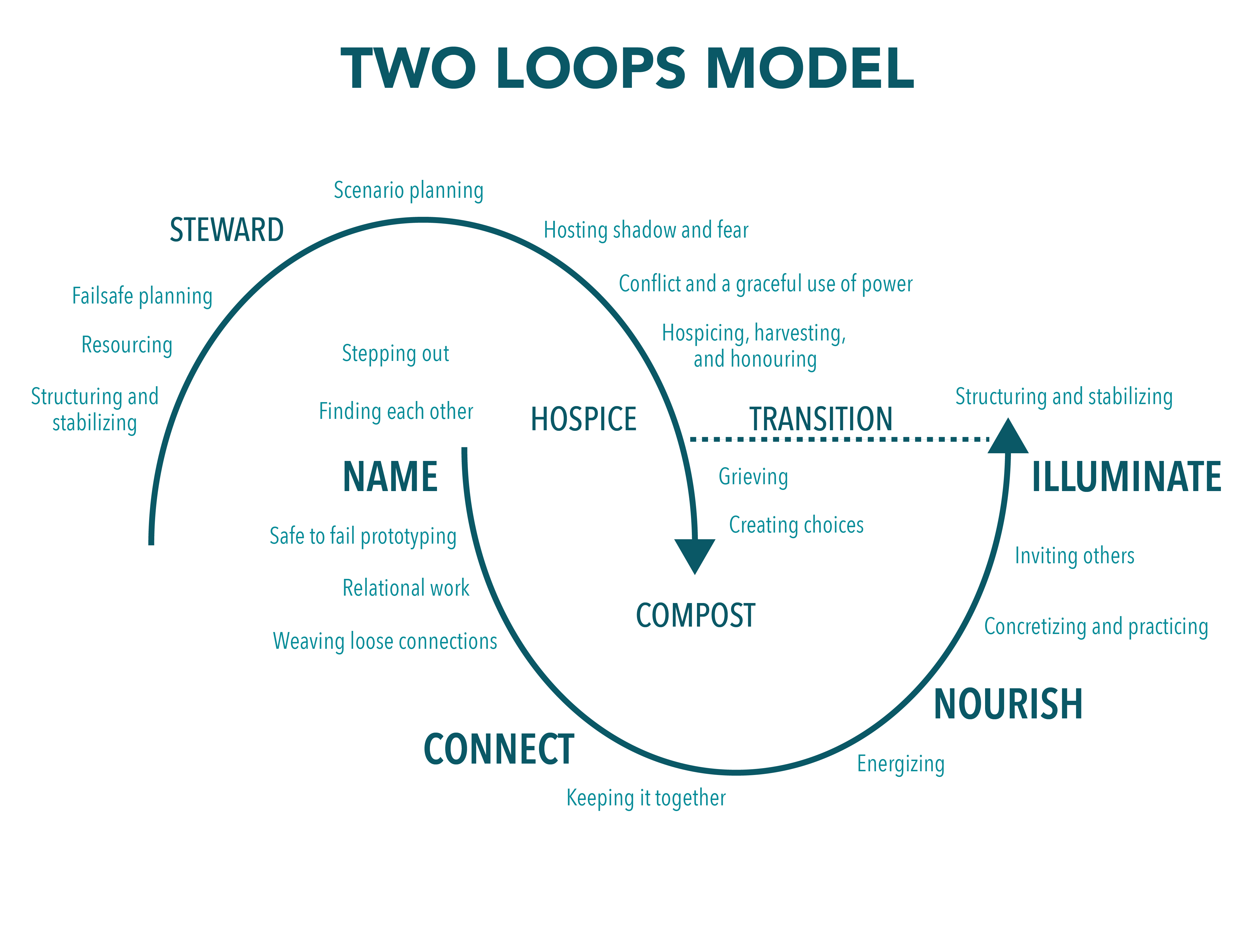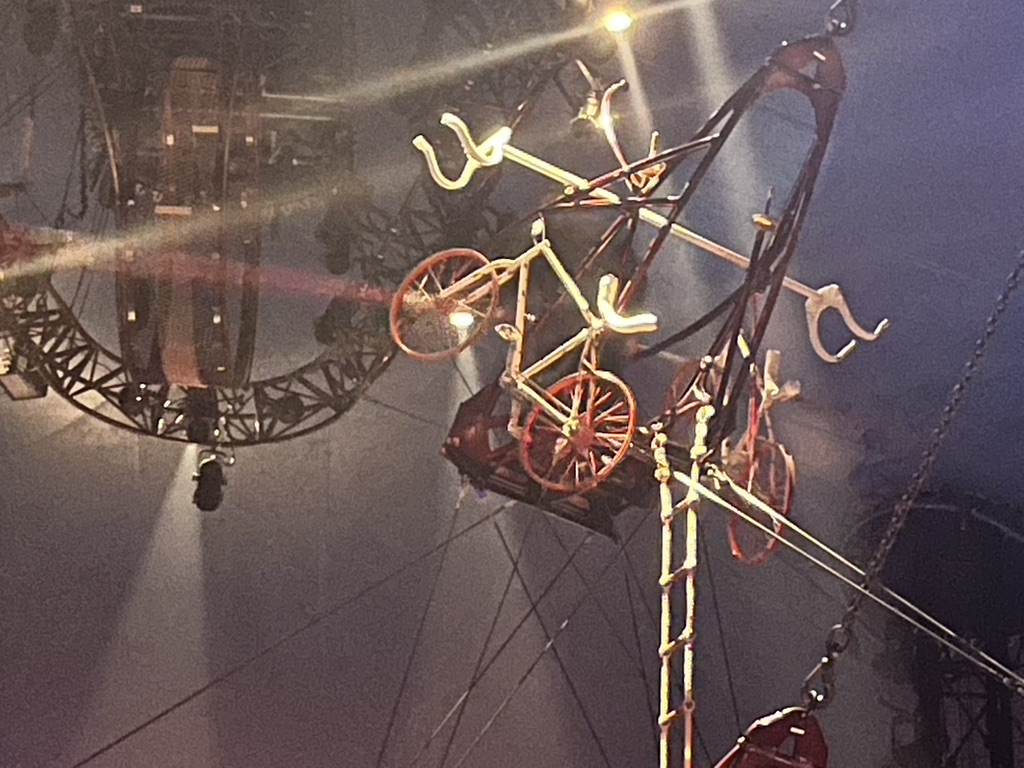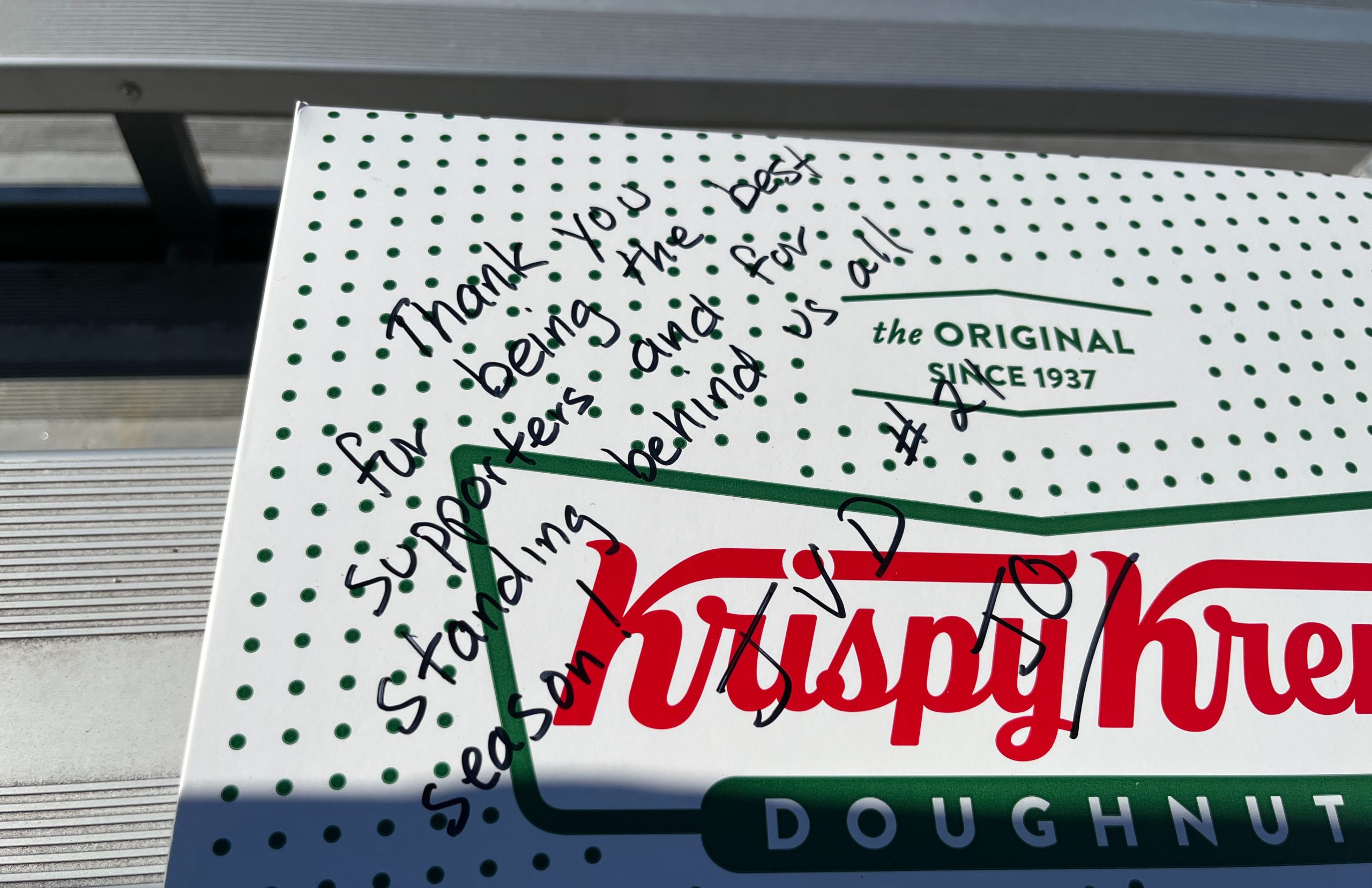
I was in a call with a colleague yesterday and we were discussing Founder’s Syndrome. Over the years, it’s one of the more persistent patterns I have seen in non-profits and social enterprises. There are a lot of similar aspects to this pattern, and it generally unfolds like this: A person or small group of people start something. Usually, they come from the front line and have experience working directly with people, delivering services, restoring landscapes, organizing campaigns, etc. With a little bit of success, these folks start thinking about growing their operations and stabilizing them over time. This means …

Part 1: Introduction to the model Part 2: A deeper dive into the model The two loops model emerged from many years of conversations amongst people working in the Berkana Exchange and their friends and mates in the late 1990s and early 2000s. As my friend Tim Merry pointed out on a comment at LinkedIn, the model itself was an emergent framework of how organizing happens on what we called back then “trans local” communities of practice. The Berkana Exchange was made up of many learning hubs around the world in places like Zimbabwe, South Africa, Senegal, India, Brazil, Mexico …

Part 1 is an introduction to this model. In the first post on this model, I introduced the basic model. In this one, I want to explain the way I think about the lines and the spaces between them The big moves The “two loops” referred to in the model’s name refer to these two arcs that essentially represent the rise and fall of influence over time. In the original, as I encountered it, only the bottom arc had labels for four big movements of an emerging system. They were the original Name, Connect, Nourish and Illuminate, based on the …

A systems change initiative I witnessed on the weekend. I think my nomination for LinkedIn post of the year goes to Cameron Tokinwise for this one: Good reminder for those extolling Systems Thinking from Pelle Ehn at the beginning of his still remarkable 1988 book, _Work-Oriented Design of Computer Artifacts_ – that systems are only ever ensembles considered as systems. Systems are not things in the world, but ways of understanding how things in the world relate to each other. Systems Thinking is a choice to interpret the world as sets of systems. To be concerned about trying to effect …

A box of donuts that Joanna Vervoza-Dolezal, the starting centre back for TSS Rovers, brought for the Swanguardians on the last game of the season. Reciprocity in support. Yesterday I had an informal call with a person who is leading up customer relationships for a large local company. The company is both a profit-making venture but also is a community institution and has a profile and responsibility beyond just the bottom line. We were talking about how the organization was stuck and the different approaches that the organization was taking towards customer relations when we stumbled onto an untapped area …

